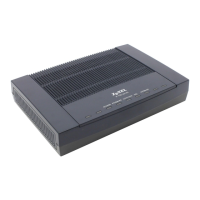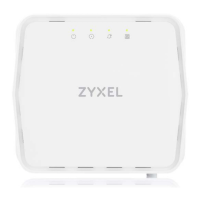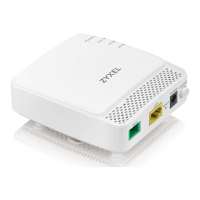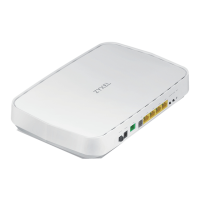Chapter 5 LAN Setup
Basic Home Station VDSL2 P8701T User’s Guide
104
5.1.2 What You Need To Know
IP Address
IP addresses identify individual devices on a network. Every networking device (including
computers, servers, routers, printers, etc.) needs an IP address to communicate across the
network. These networking devices are also known as hosts.
Subnet Mask
Subnet masks determine the maximum number of possible hosts on a network. You can also use
subnet masks to divide one network into multiple sub-networks.
DHCP
A DHCP (Dynamic Host Configuration Protocol) server can assign your VDSL Router an IP address,
subnet mask, DNS and other routing information when it's turned on.
DNS
DNS (Domain Name System) is for mapping a domain name to its corresponding IP address and
vice versa. The DNS server is extremely important because without it, you must know the IP
address of a networking device before you can access it.
RADVD (Router Advertisement Daemon)
When an IPv6 host sends a Router Solicitation (RS) request to discover the available routers,
RADVD with Router Advertisement (RA) messages in response to the request. It specifies the
minimum and maximum intervals of RA broadcasts. RA messages containing the address prefix.
IPv6 hosts can be generated with the IPv6 prefix an IPv6 address.
Finding Out More
See Section 5.4 on page 109 for technical background information on LANs.
5.1.3 Before You Begin
Find out the MAC addresses of your network devices if you intend to add them to the DHCP Client
List screen.
5.2 The LAN Setup Screen
Click Wireless network > Classic configuration > Advanced Setup > LAN to open the LAN
Setup screen. Use this screen to set the Local Area Network interface settings.

